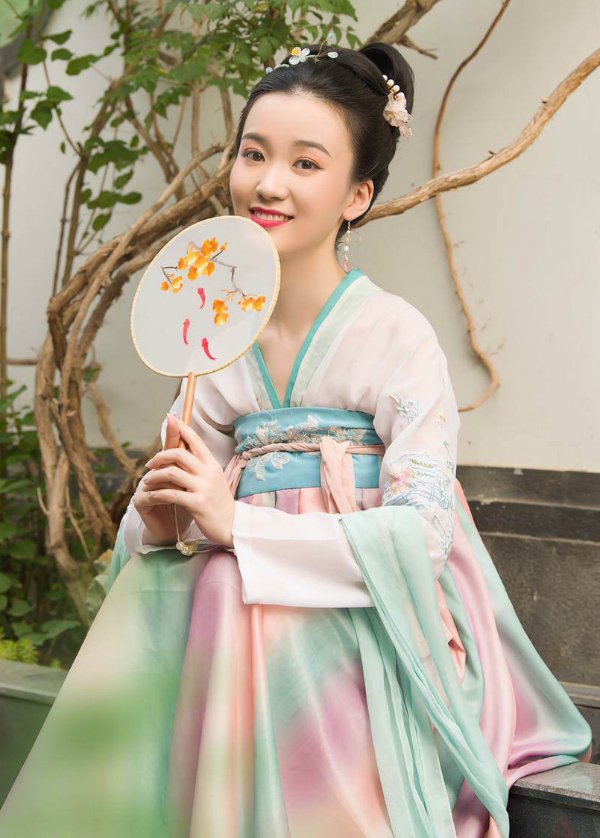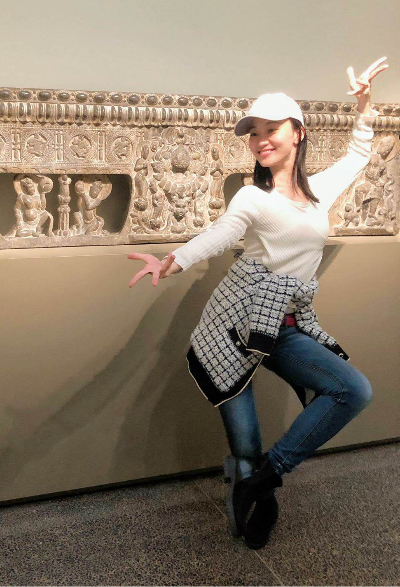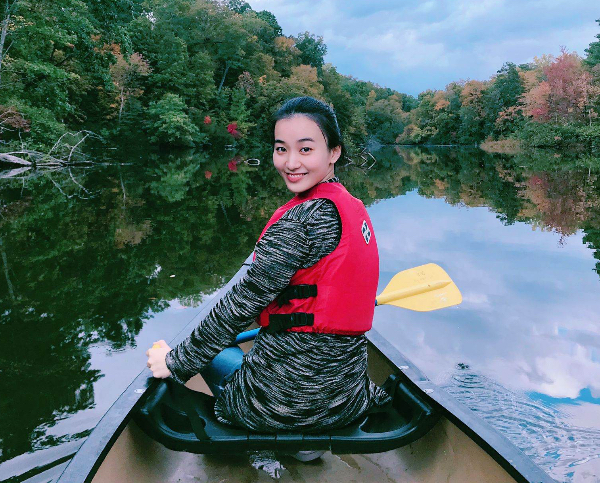Visiting Scholar Chenyuan Ma Joins Anthropology Department to Advance Research on Chinese Dance

Chenyuan Ma (马辰媛) is a visiting pre-doctoral scholar from Minzu University of China, Beijing, undertaking study and research at William & Mary as part of her doctoral work on dance culture in China. While here, she is being advised by Dr Emily Wilcox, Program Director of Chinese Studies at the Modern Languages & Literatures Department. Chenyuan has also joined the Anthropology Department where she attends classes and works on her own research, and she will be based here from fall 2022 until spring 2023. In this spotlight article, Chenyuan discusses her background as a student of dance culture, her widespread travels and research pertaining to study of diverse dance traditions across China, and her experiences as a visiting scholar at William & Mary and in the US more broadly.
Tell us about your educational background in China: what schools and universities did you attend, and what were your areas of interest?
I attended Beijing Dance Academy between 2009 and 2013 where I studied the theory and practice of dance. I was immersed in a range of styles here including Chinese Classical dance, Chinese folk dance, ballet, choreography, and contemporary dance. I also learned a variety of topics. In dance theory we studied dance history, including ancient and contemporary Chinese dance history, as well as that of international dance styles such as ballet and contemporary dance. We also learned folk dance culture, dance criticism, and dance psychology, anatomy, physiology, morphology, and body language.
Alongside this, I studied broader topics such as Chinese and Western Aesthetics, Art Theory, the basic principles of Marxism, Politics, as well as English. From 2013 to 2016 I also undertook a master’s degree here, where I studied folk dance culture. During this time, I traveled with my advisor to Yunnan, Guizhou, Sichuan, Shandong, Anhui, and Xinjiang Provinces. In these places, I studied the dance cultures of a variety ethnic groups: the Dai, Yi, Jingpo, Lahu, Qiang, and Sibe peoples, as well several Han styles.
What is the topic of your doctoral research?
For my doctoral research at Minzu University, I’m focusing on the dance culture of the Jing people of Guangxi Province, near the border with Vietnam. I am particularly interested in their religious dances and associated ritual practices, which are associated with deities of the sea and of the mountains. These rituals are thought to have first come here from Vietnam around 500 years ago and, following a ban in 1958, they were reinstituted in 1984 as part of a program of cultural revival.
What led to your initial interest in traditional Chinese dance culture? What continues to most excite you about this field of study?
I enjoy being able to travel to so many different places, and to experience and study such an exciting diversity of cultures. The opportunity to witness the different festivals, dance practices, and associated art and architecture has been wonderful. The incredible range of good food is also a big bonus!

Chenyuan demonstrates the Dunhuang dance, a variety of Chinese Classical dance, while at the National Museum of Asian Art, Washington D.C.
What led to your decision to conduct research and study in the US, and at William & Mary in particular? What have you learned from your experiences here?
I applied to go abroad to gain the opportunity to learn new things, see new things, and develop new skills and experiences. It is at the Dance School of Minzu University that I’ve come to study Anthropology in detail, and so I was particularly interested in developing my knowledge of it abroad. At William & Mary, I was especially interested in working with Dr Emily Wilcox, Director of the Chinese Studies Program, who is an influential and world-renowned researcher in the field of Chinese traditional dance.
As an international visiting scholar, how have you found the William & Mary campus community? Have you been able to connect with and befriend many people (such as during organized campus events and activities)?
I find people very friendly and kind here! I’ve met a lot of people at the Anthropology Department in class and in the graduate offices who have been very welcoming. As well as my new American friends, I’ve also been able to connect with many Chinese and international students and scholars, such as during some of the Reves Center activities for the international campus community. These have been a lot of fun – I even won a prize at their annual pumpkin carving event! I’ve found the faculty and staff at William & Mary very helpful and welcoming too, especially Dr Brad Weiss (whose classes I have been taking this semester) and Joni Carlson here in the Anthropology Department. I’ve really enjoyed working with Dr Emily Wilcox who impresses me with her willingness to meet every week to discuss my progress. I also want to thank Dr Jennifer Gülly from Modern Languages for being my host – she has taken care of me very well during my time here!
What sorts of things have you been able to do outside of the classroom to relax and to learn more about the US?
I love going out to boat on Lake Matoaka in my free time. The views are beautiful, and I enjoy seeing everything reflected on the water: it’s like boating over a mirror. I’ve also attended a concert, dance event, and musical here in town, and I’ve undertaken a few trips outside of Williamsburg, including to Washington, D.C. Here I visited several museums with some of my new friends, including the National Museums of Asian Art, African American History and Culture, Natural History, American History, the Library of Congress, and the National Gallery of Art. I also got to see a lot of other heritage sites such as the Lincoln Memorial and Washington Monument. From these experiences, I’ve learned a lot about a range of topics, as well as about American history and culture.

 Skip to main content
Skip to main content
